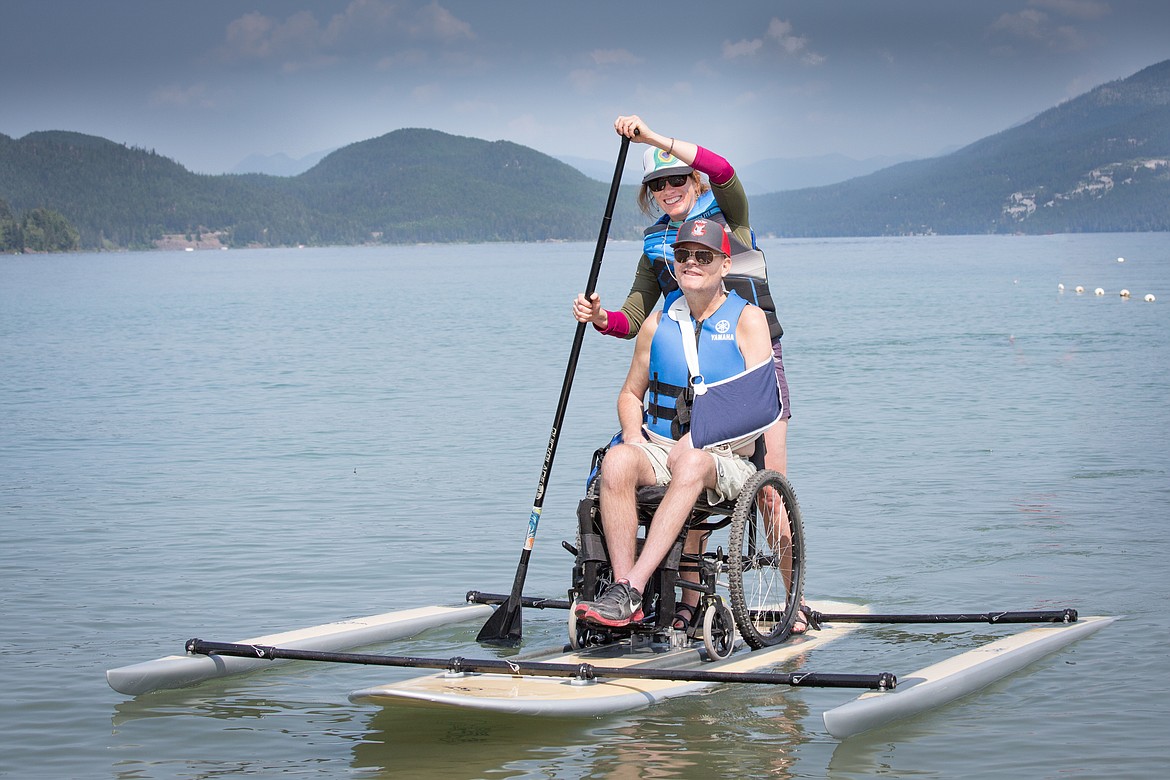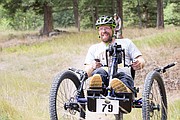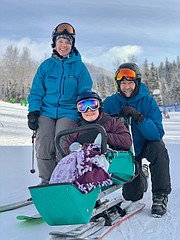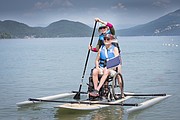Adaptive recreation program marks 35 years of outdoor access
Many people flock to Northwest Montana for the great outdoor recreation opportunities abound — but for some it’s not as simple as stepping outside the front door and charging out to the surrounding mountains, lakes and parks.
For people with varying degrees of disabilities, many considerations must be taken into account when making a plan for a week-long trip, a day or even just one activity. Those with mobility impairments have to inquire about the availability of adequate parking, ramps, trail width and maintenance, restroom accessibility and other variables before crossing the threshold of their own house into a world with highly inconsistent accessibility.
DREAM Adaptive Recreation in Whitefish has spent 35 years fulfilling its mission of making the great outdoors available and accessible for all, regardless of differing abilities. This month the nonprofit is celebrating that anniversary as it continues to enhance the lives of individuals with disabilities by providing numerous outdoor adaptive recreational opportunities.
“It’s an absolutely incredible milestone,” DREAM Adaptive Executive Director Julie Tickle said. “What [the anniversary] means to me is that there is a need for DREAM in the community. It has existed and existed really soundly for 35 years so it just shows that a program like DREAM… is such a critical part of our community.
“And that it’s really important that we continue to do all the hard work to advocate for people with disabilities and to help empower them through sports,” Tickle added.
Thirty-five years ago, before the Americans for Disabilities Act came into law in 1990, the founders of DREAM Adaptive Recreation noticed a significant problem and decided to act on it. Back in 1985, founder Dottie Maitland discovered that many people who needed special accommodations were not allowed on tours and had a hard time accessing recreational areas.
She set out to make a difference for disabled persons, and began by assembling a local team to research accessibility and to begin advocating for adaptive changes in public places. Over the last 35 years both the program and improvements in accessibility across the Flathead Valley have come a long way.
“Our founders were at the forefront of lobbying for access and inclusion,” Tickle pointed out.
Tickle, who became the executive director in the spring of 2018, was originally hired as a program coordinator in January of 2017. She previously worked in Colorado with the U.S. Olympic and Paralympic committee, and when a job opened up at DREAM she knew it would be a perfect fit. Tickle said the feeling of home and the sense of community that DREAM Adaptive offered drew her to the program.
“It was just this overwhelming feeling that I was in the right place because of the culture and the spirit that DREAM brings to the community,” Tickle recalled.
She has a focused mission to continue leading the organization in a way that honors its rich history.
Some of DREAM Adaptive’s first projects were creating a Flathead Valley accessibility guide, which directed disabled people to places that were accessible and also created awareness for other areas that needed change, and forming the wheelchair-friendly Trail of the Cedars in Glacier National Park. Another trailblazing project was Ski Dreams, the original adaptive ski program at Whitefish Mountain Resort.
This is where DREAM Adaptive began, and Tickle said the organization is expanding on those foundations every year by focusing on increased access to trails and lakes. One of the ways the program is advocating for more accessibility at these outdoor sites is by meeting with the U.S. Forest Service, or other groups that are creating new trails, prior to the start of the project. Tickle helps people understand different ways to make trails accommodating to adaptive equipment and has found most people are open to the concepts.
One recent example of this is the Cedar Flats Project, a proposed expansion of a non-motorized trail system in an area just north of Columbia Falls. Tickle said she met with the Forest Service and brought adaptive bicycles in an effort to inform the group of ways they would be able to form some trails to be inclusive of people with differing abilities. As a result the project now proposes at least 4 miles of trail that will accommodate adaptive equipment.
“That’s a really great example of the community coming together and being willing to listen and include all people that want to access the trails,” Tickle said. “So we’re really working hard on collaborating, and we’re finding that there are many willing partners to listen and be educated in the Flathead Valley.”
Over the last couple of years, DREAM Adaptive has added two new programs — mountain biking and Nordic skiing. Both have been received well by the community and Tickle said she has a lot of people itching to ride their fleet of adaptive mountain bikes. Although she wants DREAM to continue expanding by adding new programs in a safe manner, the director would also love to see adaptive equipment become more affordable for individuals in the future. One adaptive mountain bike costs over $12,000, which is not feasible for most people to afford on their own.
“We hope for there to be a day where DREAM exists, but maybe in a different capacity,” Tickle said. “[Right now] we exist obviously to help with those financial challenges of adaptive equipment, but hopefully someday they’re more available for people.”
Volunteers continue to be at the heart of keeping the organization running. Upward of 125 volunteers share their time and talents each year, and a handful have even volunteered since the birth of the program in 1985. Although the volunteer instructors give a considerable amount of their energy to helping disabled participants, Tickle said they get much in return as well just by being involved with DREAM’s inspiring mission.
As the entire DREAM Adaptive team reflects on the history of the organization, Tickle expressed, “It’s bigger than sports, that’s the thing…”
The program started because the founders saw a need for inclusion of all people and abilities in the community. It does not just exist solely because it is fun to ride a bike or paddle across a lake; according to Tickle it exists because giving people the opportunity to recreate outdoors and participate in sports hopefully acts as a catalyst in their lives, helping them discover that they are capable of more than the often perceived limitations that people put on individuals with disabilities.
“I’ve gotten to know some of the founders and many of our volunteers have been around for the 30-plus years…” Tickle said. “Once you dial it back to all these individuals and all the time, energy, love and talents that they’ve each poured into this — it’s just so amazing. Definitely a labor of love.”
Reporter Whitney England may be reached at 758-4419 or wengland@dailyinterlake.com








